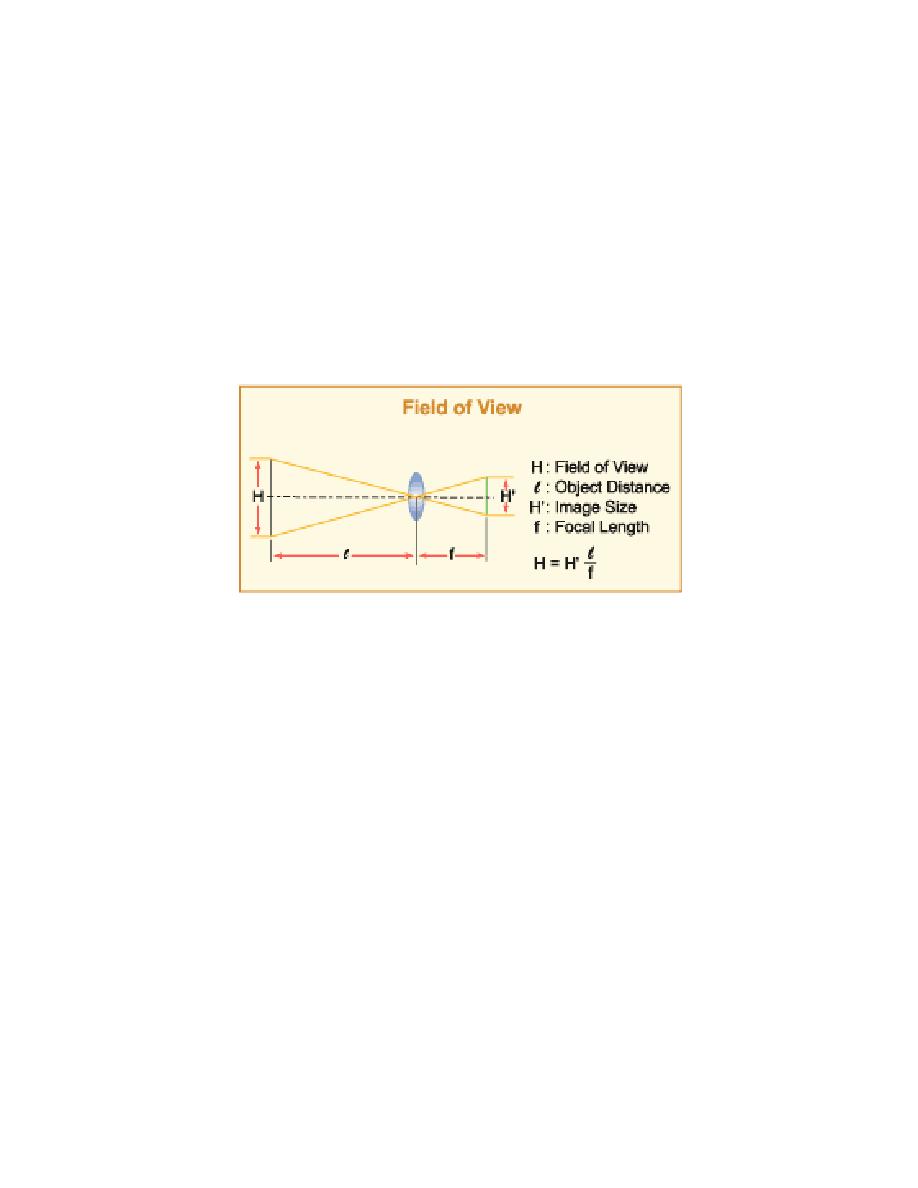
UFC 4-021-02NF
27 September 2006
change 1, 23 October 2006
4-12.6
Figure 4-11 shows the relationship between field-of-view and the focal length
of a lens. Select an appropriate focal length and use this formula to calculate image
field-of-view:
4-12.6.1 Select the focal length (f).
4-12.6.2 Estimate the image size desired (H').
4-12.6.3 Estimate the maximum object distance (l).
4-12.6.4 Calculate the field-of-view (H): H= H'x(l/f).
Figure 4-11. Field-of-view and Focal Length
4-12.7
For example, a 2 meter high person would generate a 0.32 millimeter image
size when 100 meters away from a camera with a 16 milimeter focal length.
2 meter person (H) = H' image size x 100 meters (l)/16 milimeters (f).
H' = 2 meter person x 16 milimeters/100 meters.
H'= 0.32 milimeter image/person on the camera.
The image size in the monitor depends on the display size.
4-13
RESOLUTION
4-13.1
Resolution refers to the "graininess" of an image. A sharp picture has more
pixels of information and is viewed as a "sharp" picture. Less pixels (digital cameras) or
TV lines (analog cameras) will result in a "grainier" image. 640 pixels by 480 pixels is an
industry standard resolution for digital cameras. 320 by 240 will generate a satisfactory
image that can help with transmission costs because it is a quarter of the data
associated with a 640 by 480 image. The system designer is recommended to use 640
by 480 as a standard CCTV resolution design criterion for digital cameras. As a
minimum, use 320 by 240 if there are bandwidth issues. For analog cameras, use 480
TV lines (high) to 330 TV lines (low).
64


 Previous Page
Previous Page
